![]()
![]()
![]()
Use LEFT and RIGHT arrow keys to navigate between flashcards;
Use UP and DOWN arrow keys to flip the card;
H to show hint;
A reads text to speech;
82 Cards in this Set
- Front
- Back
|
LEVELS ORGANIZATION
|
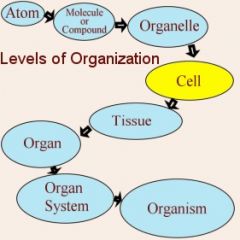
|
|
|
CHON CA P
|
Carbon
Hydrogen Oxygen Nitrogen Calcium Phosphorus |
|
|
H2CO3
|
Carbonic acid, a weak acid
|
|
|
PH
|
normal Ph 7.35-7.45
A measure of the acidity or alkalinity of a solution, numerically equal to 7 for neutral solutions, increasing with increasing alkalinity and decreasing with increasing acidity. The pH scale commonly in use ranges from 0 to 14. |
|
|
MONOSACCHARIDE
|
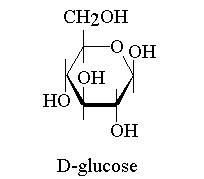
Simplest carbohydrates are monomers called MONOSACCHARIDE or simple sugar the 3 of primary importance are GLUCOSE, FRUCTOSE, GALACTOSE.
|
|
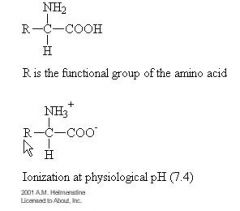
NH2COOH
|

Amino acids contain both a carboxyl group (COOH) and an amino group (NH2).
|
|
|
TRIGLYCERIDE
X |
Triglycerides are the chemical form in which most fat exists in food as well as in the body. They're also present in blood plasma and, in association with cholesterol, form the plasma lipids.
Triglycerides in plasma are derived from fats eaten in foods or made in the body from other energy sources like carbohydrates. Calories ingested in a meal and not used immediately by tissues are converted to triglycerides and transported to fat cells to be stored. Hormones regulate the release of triglycerides from fat tissue so they meet the body's needs for energy between meals. |
|
|
PROTEIN FUNCTIONS
|
Enzymes---Amylase
Cell Signaling--Insulin Immunity--Antibodies Plasma Membrane--Transmembrane Structure--Collagen Carrier--Albumin |
|
|
LIPID FUNCTIONS
|
5 primary types of lipids in humans are
Fatty Acid Triglycerides phosphsolipids eicosanoids Steroids |
|
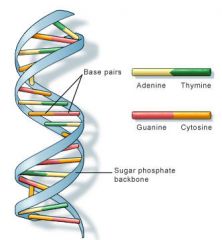
DNA
|

DNA, or deoxyribonucleic acid, is the hereditary material in humans and almost all other organisms. four chemical bases: adenine (A), guanine (G), cytosine (C), and thymine (T).
|
|

PLASMA MEMBRANE
|

The plasma membrane (cell membrane) is made of two layers of phospholipids. The membrane has many proteins embedded in it.The plasma membrane regulates what enters and leaves the cell. endoctyosis and exocytosis. Many molecules cross the cell membrane by diffusion and osmosis.Hormones bind to receptors on the surface of the target cells.
|
|
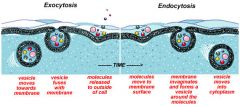
ENDOCYTOSIS/EXOCYTOSIS
|

Endocytosis is a process for moving items that are outside of the cell into the cytoplasm of the cell. Exocytosis is a process for moving items from the cytoplasm of the cell to the outside.
|
|
|
GOLGI FUNCTION
|
Packages Carbs,lipids, protiens into transport vesicles
|
|
|
ER FUNCTION
|
Smooth ER is important in the synthesis of lipids.
Rough ER is important in the synthesis of other proteins. |
|
|
CELL DIVISION
|
Interphase: Cells may appear inactive during this stage,
Prophase: During this first mitotic stage, the nucleolus fades and chromatin (replicated DNA and associated proteins) condenses into chromosomes. Metaphase: Tension applied by the spindle fibers aligns all chromosomes in one plane at the center of the cell. Anaphase: Spindle fibers shorten, the kinetochores separate, and the chromatids (daughter chromosomes) are pulled apart and begin moving to the cell poles. Telophase: The daughter chromosomes arrive at the poles and the spindle fibers that have pulled them apart disappear. |
|
|
4 TISSUES
|
Epithelial
Connective Muscle Nervous |
|
|
EPITHELIAL NAMING
|
Cuboidal
Columnar |
|
|
DENSE CONNECTIVE TISSUE
|
Areolar
Dense Elastic Reticular Adipose Specializd Bone Cartilage Blood |
|
|
3 CARTILAGES
|
Hyaline
Elastic Fibrocartilage |
|
|
BLOOD CELLS
|
White Blood Cells
Red Blood Cells Platelets |
|
|
NH3
|
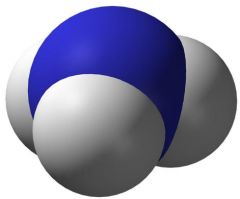
ammonia
|
|
|
HEMOGLOBIN
|
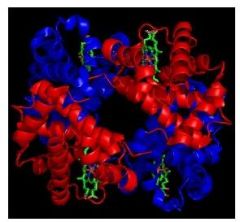
|
|
|
ELASTIN
|
coiled fibers that Stretch and recoil like a rubber band.
|
|
|
CO2
|
Carbon Dioxide
|
|
|
POLYSACCHARIDE
|

a chain of MonoSACCHARIDE make up a POLYSACCHARIDE
|
|
|
MITOCHONDRIA
|
Mitochondria are the cell's power producers. They convert energy into forms that are usable by the cell. Specialize in Synthesizing ATP.
|
|
|
RETICULAR FIBERS
|
Thin collagen fibers acoated with glycoprotein. They form a spongelike framework for such organ as Spleen and lymph nodes.
|
|
|
SKIN FUNCTIONS
|
Protection - under it
Sensation - heat, cold,touch,presure Thermoregulation-Temp, Persperation Synthesis- UV Light inactive Vit D to Active Vid D. Storage-Fat, Water Communication- Facial Expresssion, Blushing Excretion-Urea into Sweet Absorption-Oxgen, C02 Water Proof-Because of Caritan |
|
|
SKIN STRUCTURE
|
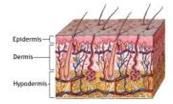
The epidermis contains 5 layers. From bottom to top the layers are named:
•stratum basale •stratum spinosum •stratum granulosum •stratum licidum •stratum corneum |
|
|
STRATA
|
Meaning Layer
|
|
|
KERATIN
|
Cubodial Cells upto the stratum Corneum
|
|
|
ARECTOR PILI
|
muscle connected to hair root that reacts to stimuli.
|
|
|
GLANDS
|
Sudoriferous Glands - Sweat Glands
Sebaceous Glands - (Oil) MerocrineGlands - sweat Glands Cooling Aprocrine Glands - Scent Glands Ceruminous Glands - cerumen (earwax) Mammary Glands |
|
|
BURNS
|
1ST Degree Burns- epidermis
2nd Degree Burns - epidermis and dermis, but leaves some of the dermis. 3rd Degree Burns- Degree Burns - epidermis and dermis and some of the deeper tissues are destroyed. |
|
|
TYPES OF BONES
|
|
|
|
BONE CELLS
|
Osteogenic cells respond to traumas, such as fractures, by giving rise to bone-forming cells and bone-destroying cells.
Osteoblasts -Builds Bone(bone-forming cells) synthesize and secrete unmineralized ground substance and are found in areas of high metabolism within the bone. Osteocytes are mature bone cells made from osteoblasts that have made bone tissue around themselves. These cells maintain healthy bone tissue by secreting enzymes and controlling the bone mineral content; they also control the calcium release from the bone tissue to the blood. Osteoclasts- Breaks down Bone Osteoclasts are large cells that break down bone tissue. They are very important to bone growth, healing, and remodeling. The last type of cells are bone-lining cells. These are made from osteoblasts along the surface of most bones in an adult. Bone-lining cells are thought to regulate the movement of calcium and phosphate into and out of the bone. |
|
|
OSTEON
|
Functional unit of bone ring around
|
|
|
ZONES OSSIFICATION
|
Center
Ends Periosteum |
|
|
BONES SKULL
|
page 245,246, 247
|
|
|
BONES SKULL
|
|
|
|
SINUSES
|
page 248
|
|
|
CRANIAL FOSSAE
|
|
|
|
EXTERNAL AUDITORY MEATUS
|
pic
|
|
|
SPHENOID
|
pic
|
|
|
ORBIT
|
page 255
|
|
|
MANDIBLE
|
page 256
|
|
|
SPINAL CURVATURE
|
scollosis- cruve
Kyphosis- hunchback Lordosis- swayback |
|
|
VERTEBRAL FORMULA
|
?? page 260
|
|
|
HYOID APPARATUS
|
page 257
|
|
|
HYOID APPARATUS
|
page 257
|
|
|
ATLAS/AXIS
|
page 263
|
|
|
VERTEBRAE
|
page 268
|
|
|
VERTEBRAE
|
page 268
|
|
|
PELVIC GIRDLE
|
page 275
|
|
|
SCAPULA
|
page 270
|
|
|
SCAPULA
|
page 270
|
|
|
HUMERUS
|
page 271
|
|
|
OS COXAE
|
page 276
|
|
|
FEMUR
|
page 279
|
|
|
FIBROBLAST SYNTHESIS
|
collagen- tendon,ligament
Reticular-spleen,lymph nodes Elastic-pinna,IVdisc GAG -heparin,chondroitin,glucoseamine, hyaluronic acid - in fluid joint glycoproteins- mucin,antibodies |
|
|
FIBROBLAST SYNTHESIS
|
|
|
|
GLYCOPROTEIN
|
|
|
|
GAG
|
|
|
|
SYNOVIAL JOINTS
|
|
|
|
SYNOVIAL JOINTS
|
|
|
|
COLLAGEN
|
|
|
|
FIBROUS JOINTS
|
|
|
|
FIBROCARTILAGENOUS JOINTS
|
|
|
|
SYNOVIAL JOINTS
|
|
|
|
STIFLE
|
|
|
|
STIFLE
|
|
|
|
EXTENSION/FLEXION
|
|
|
|
EXTENSION/FLEXION
|
|
|
|
EXTENSION/FLEXION
|
|
|
|
JOINTS
|
|
|
|
JOINTS
|
|
|
|
URIC ACID
|
|
|
|
CARPAL TUNNEL
|
|
|
|
CARPAL TUNNEL
|
|
|
|
ROTATOR CUFF
|
|
|
|
VOCABULARY
|
|
|
|
|
|

